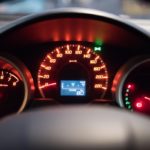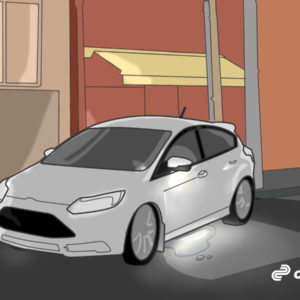Your car comes with many features that keep you and your passengers safe in a variety of weather and driving conditions. One such feature is the vehicle dynamic control (VDC) system. But, what does vehicle dynamic control mean? It works with the brakes to help you maintain steering and handling control. Read on to learn about what the VDC does, how to maximize its advantages, and many more.
What Does VDC OFF Mean?
There is a VDC OFF indicator light on your vehicle’s dash. This warning light usually stays dark as long as the stability control system is turned on. When the VDC off indicator is illuminated, that means either the system has been turned off by the driver, or it has been disabled automatically due to a failure.
What Is VDC?

You’re probably wondering what VDC is on a car. VDC is a safety feature found in some cars. It helps the driver maintain steering control to keep the vehicle on course, even under extreme driving conditions.
Does that sound familiar? That’s because the VDC system is effectively the same as electronic stability control (ESC). The VDC system works in conjunction with the traction control system (TCS). These systems are mandatory features in all vehicles manufactured since 2012.
Infiniti, Nissan, and Subaru are some of the manufacturers that use the alternative name “VDC” (instead of ESC) for branding purposes.
What Does VDC Do?
VDC controls the brakes of each wheel. Its computer module keeps track of how fast each wheel is rotating and the direction of the steering wheel, among other parameters.
When the system notices the vehicle deviating from the directional path the driver is traveling on, VDC goes into action.
To give you an idea of how it works, let’s take oversteering as an example. The front wheels spin at different speeds, with the outer wheel spinning faster than the inner one. The speed difference can cause the car to spin out of control.

VDC prevents oversteering by applying the brake on the outer front wheel. By slowing down the faster-spinning wheel, the speed difference between the front wheels is reduced.
Some VDC models may also briefly reduce the engine’s power output. These systems can back off the throttle, delay the ignition spark timing, or do both. The drop in engine power slows the vehicle down, making it easier to handle.
Can the VDC Keep Vehicles From Rolling Over?
VDC does not completely eliminate the risk of your vehicle rolling over. Other factors can result in your vehicle tipping over, such as high ride height and going at speeds that are too fast for the brakes to handle.
However, VDC does reduce the risk of rolling over by improving stability control. Combined with careful driving, it will help keep you safe.
What Happens When VDC Develops Issues?
The VDC system runs in the background and doesn’t make a fuss for the most part. It only steps in when your vehicle starts to veer from its intended path.. If it develops a problem, there’s a good chance you won’t notice it until the moment the VDC doesn’t kick in as expected.
Getting the Most Out of the VDC System
When you start your vehicle, its VDC turns on immediately. You can turn it off, but it’s highly recommended to keep the system in the “on” state. It’s a required safety feature and much more useful. The only time you should consider disabling the VDC is under the conditions outlined in your owner’s manual.
Deactivating the vehicle dynamic control system will trigger the VDC OFF light on the dash. To restore the safety feature, simply turn your vehicle off and then start it up again. The VDC should come back online with your vehicle. Some control systems have a convenient button that you can press to activate and deactivate the VDC at will.
Final Thoughts
VDC or ECS—whatever you call your car’s stability control system, it keeps you in control of the steering. However, keep in mind that it’s not a self-driving system and cannot eliminate the risk of an accident. Having a VCD means you have a bit of a safety net, but you still need to make an effort to be a responsible driver. So it’s up to you to drive safely with the VDC supporting you on the road.
Always drive at a safe speed and avoid turning too hard, especially if the road isn’t in good condition and the weather is bad. And if VDC starts acting up, have your vehicle diagnosed and repaired as soon as possible. Safe driving!
Any information provided on this Website is for informational purposes only and is not intended to replace consultation with a professional mechanic. The accuracy and timeliness of the information may change from the time of publication.


















My car turn VDC OFF, is it possible to drive thou VDC is OFF?
Am afraid and it turned over hit(Boiling).
Please assist me before meets a mechanic.
Nissan Murano 2010
VQ35 Engine #.